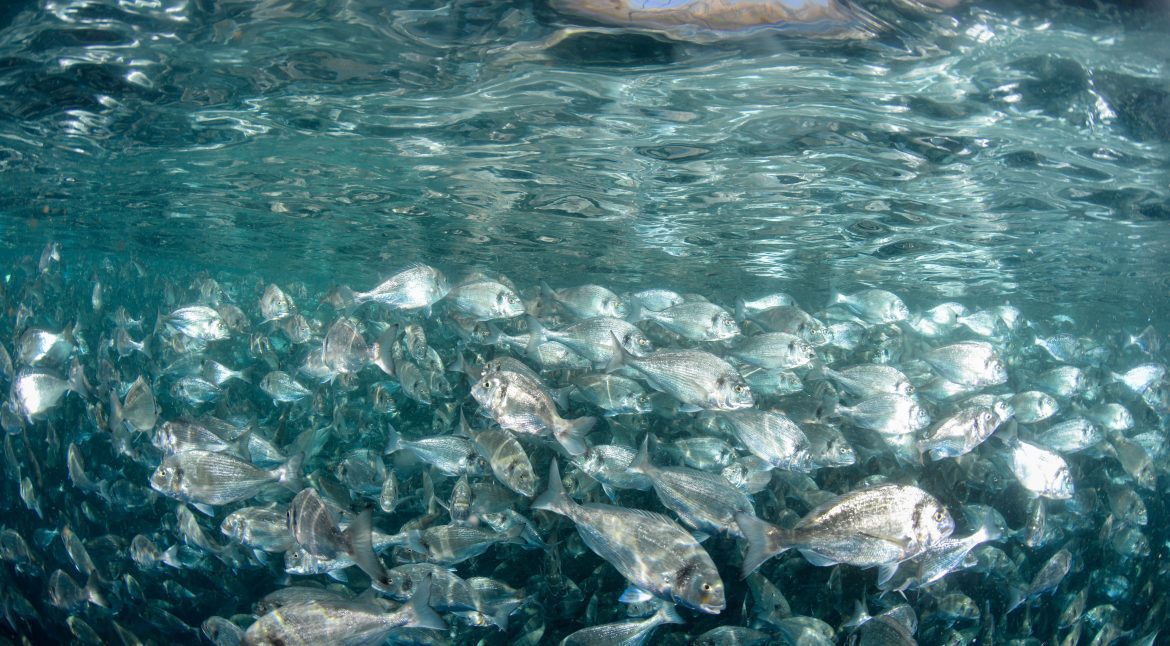Self-feeding systems have been extensively used to study animal behaviour and food preferences in vertebrates. In this study, we used a dual-choice self-feeding system to explore feeding behaviour and dietary discrimination based on organoleptic cues. Experimental tanks were provided with 2 self-feeders activated by string sensors and connected to a computer system. In the first experiment (E1) [6 tanks, 10 animals/tank, body weight (BW) 266 g ± 19.4 g], both feeders delivered the same control standard diet to evaluate the potential preference for one feeder. E1 had 3 phases: 1st, animals were allowed to demand from both feeders; 2nd, from only one feeder and 3rd from both feeders again. The second experiment (E2) (11 tanks, 15 animals/tank, BW range 25–50 g) examined whether seabream can discriminate between 3 isoenergetic diets: the control diet; a positive/palatable diet containing high levels of fish, squid and krill meal; and a negative diet in which 1.5% quinine hydrochloride was added to the control diet. E2 had 3 phases: 1st acclimation with control diet; 2nd dual-choice; 3rd dual choice with reversal of feeders. The third experiment (E3) (8 tanks, 10 animals/tank, BW range 25-50 g) was performed using a single self-feeder per tank, with each tank being fed either control or quinine diet, to corroborate the aversive response to quinine in the absence of dietary choice. E1 demonstrated that animals demanded significantly less when only one feeder/sensor was available. E2 shows that seabream can easily discriminate a bitter compound (quinine) in the diet, showing negative preference (P < 0.05) in both phases, 2nd and 3rd. When no choice was available (E3), seabream equally demanded control or quinine diet, presumably driven by its energy requirements. However, the presence of the bitter substance increased feed refusals, 14.3% rejection of demanded feed in quinine diet, versus 2.6% in control diet, indicating a role of sensory systems in assessing food quality. A positive conditioning with a palatable diet was not effective and no positive choices were measured over a basal diet, although results were possibly influenced by the previous familiarization with the basal diet and by the experimental conditions (fast growing juveniles at high temperature). This poor dietary selection during active feeding periods could partly explain the easy adaptation of this species to substitution diets. Finally, results suggest that food intake is conditioned by agonistic behaviour in an age-dependent manner. The information will be useful for diet and feeding strategy design in seabream.

Autores: Puchol, S., Leal, E., Angotzi, A.R., Rosel, J., Morais, S., Cerdá-Reverter, J.M.
Libro/Revista: Aquaculture 559, 738449
